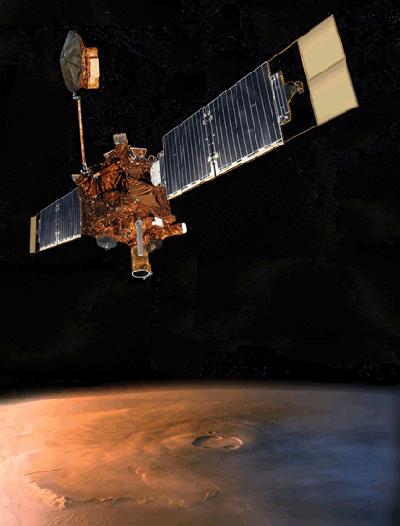In early November, the Mars Global Surveyor (MGS) fell silent. Since then, NASA has unsuccessfully tried to contact the orbiter, and the most productive mission yet to the Red Planet appears to be at an end.
“Mars Global Surveyor has surpassed all expectations,” says Michael Meyer, NASA’s lead scientist for Mars exploration. “It will yield more discoveries as the treasury of observations it has made continues to be analyzed for years to come.”
On November 2, MGS sent word concerning difficulty moving its solar panels. Without the arrays properly working, the spacecraft may no longer be able to generate enough power to communicate. Although this appears to be the likely explanation, engineers are investigating other reasons for the radio silence.
“Realistically, we have run through the most likely possibilities for re-establishing communication, and we are facing the likelihood that the amazing flow of scientific observations from Mars Global Surveyor is over,” explains Mars Exploration Program manager Fuk Li. “We are not giving up hope, though.”
Launched November 7, 1996, MGS has surpassed initial expectations. NASA originally scheduled the mission for about 2 Earth years. After that period passed with significant discoveries, the space agency continually renewed the MGS mission, most recently on October 1, 2006.
Among the orbiter’s successes, MGS has discovered numerous young gullies shaped long ago by flowing water, helped determine the Opportunity rover’s landing site by identifying water-related mineral deposits, and mapped the Red Planet’s topography.
“It is an extraordinary machine that has done things the designers never envisioned despite a broken wing, a failed gyro and a worn-out reaction wheel,” says MGS Project Manager Tom Thorpe. “The builders and operating staff can be proud of their legacy of scientific discoveries and key support for subsequent missions.”










